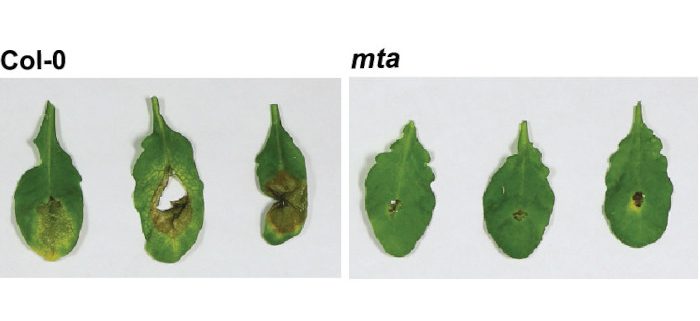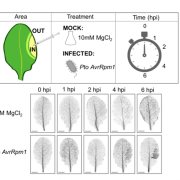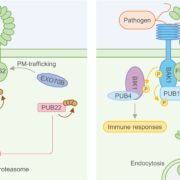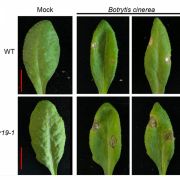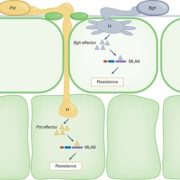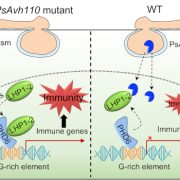N6-methyladenosine mRNA modification dynamics in plant immunity
Wil Prall and Brian Gregory, University of Pennsylvania Department of Biology
Background: To determine how plants respond to bacterial and fungal pathogens, researchers are interested in analyzing the transcriptome, the global collection of RNAs in eukaryotic cells to see how plants react. Not only changes in individual RNA copy number (abundance) are observed, but also significant changes in the covalent additions to specific nucleotides in messenger RNAs (mRNAs) (i.e., nucleotide modification). In this work we investigate the addition of a methyl group onto the mRNA nucleotide adenosine (N6-methyladenosine (m6A)). m6A addition to mRNA is of great interest because its presence in individual mRNAs is known to affect RNA stability, translation, and maturation.
Question: What is the m6A transcriptomic landscape before and after exposure to simulated and real pathogen infection in Arabidopsis? How global reduction in m6A across all mRNAs affects plants preparedness and reactivity to pathogen stress?
Findings: Global depletion of m6A in mutant and transgenic seedlings and adult Arabidopsis plants (mta mutant and 35S:ALKBH10B over-expressor), results in increased resistance to bacterial and fungal infections, altering fundamental plant immune response. m6A deposition is specifically coordinated on RNA transcripts directly involved in defense and immunity prior to and following pathogen signaling and stress. The modulation of m6A on specific transcripts is correlated with changes in abundance and internal mRNA cleavage demonstrating this modification as another layer of control before and during the immune response.
Next Steps: The m6A modification is added to transcripts by ‘writer’ proteins, removed by ‘erasers’ and bound by ‘readers’. Understanding how these proteins are regulated themselves, and how they regulate the selective addition and removal of these marks in the context of pathogen infection is of critical importance.
Reference:
Wil Prall, Arsheed H. Sheikh, Jeremie Bazin, Jean Bigeard, Marilia Almeida-Trapp, Martin Crespi, Heribert Hirt, and Brian D. Gregory (2023) Pathogen-induced m6A dynamics affect plant immunity. https://doi.org/10.1093/plcell/koad224


